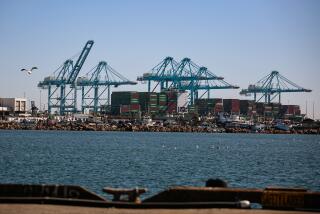When Jobs Are Too Hard on Workers
- Share via
America’s workers are dying from injuries and diseases brought on by their jobs. Men and women who spend their day repeating the same motion, breathing hazardous substances and operating heavy equipment are leaving the job in pain--and in jeopardy. For an increasing number of employees, working is becoming hazardous to their health.
The toll is steep. An estimated 71,000 workers died in 1987 from causes traced to their jobs, according to a recent report by the National Safety Workplace Institute. The study attributed a tiny but measurable fraction of all deaths from cancer, heart disease and neurological ailments to poor working conditions.
Americans have a better chance of dying from a condition brought on by the job than from a car accident or any other preventable cause, according to the report by the worker-safety advocacy group. Tragically, the deaths are increasing.
Work-related injuries are also on the rise in factories, offices, grocery stores, construction sites and other areas. Repetitive-motion injuries, which represent the nation’s leading job hazard, have risen fivefold in eight years.
In response to that dramatic increase, Secretary of Labor Elizabeth Hanford Dole announced last week voluntary guidelines to prevent injuries in meat-processing plants, where 30% of the workers are likely to get hurt in a year. The new guidelines are a positive step. Prevention is a more humane and economical strategy than searching for a cure after the damage is done.
Tougher standards are warranted. To Dole’s credit, the government is working on new mandatory safety regulations. The rules, to take effect in two to three years, will apply to all industries. The proper regulations--if adequately enforced with multiple inspections and heavy penalties--can save lives and limbs.
Dole also deserves credit for reviving the Occupational Safety and Health Administration, a casualty of the Reagan Administration. A stronger OSHA should impose hefty fines, encourage criminal prosecutions and enforce tougher regulations.
Business must do more as well. Worker safety must become a higher priority. In some offices, the remedy may be a matter of design, additional training or improved planning. Other jobs require safer equipment, changes in production goals and greater management sensitivity.
Labor Day is a reminder of a history of intentional disregard for known health and safety hazards and the movements that corrected so many labor abuses. Work injuries, whether from yesterday’s assembly lines or today’s computer, still cripple. The risk of serious injury, and in some cases, death, should not be part of a day’s work.
More to Read
Sign up for Essential California
The most important California stories and recommendations in your inbox every morning.
You may occasionally receive promotional content from the Los Angeles Times.












